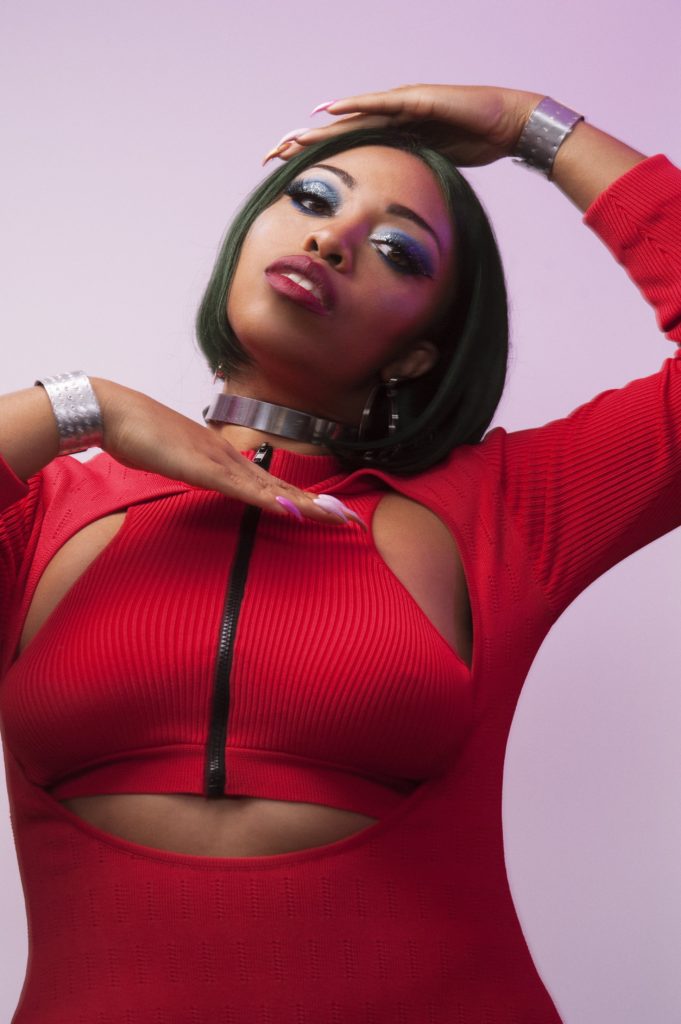Black Futures Month focuses on what the future of Black technology, health, education, family and more can and will be; it was created by The Black Lives Matter movement in 2015, and has been celebrated every February since. 2018’s Black Futures Month was dedicated to exploring the future of Black Feminism, and specifically Black Lives Matter’s activist Erica Garner.
Garner passed away at age 27, due to a heart attack. Her father was Eric Garner; the man who died when a New York police officer put him in a chokehold in 2014. Many described Erica Garner as a warrior who not only fought for justice for her father, but for all people of color.
The BLM invited 14 visual artists and writers to use their individual talents to express their take on the Black Future. One of the artists who participated was Suzi Analogue, a producer, songwriter, artist and the creator of Never Normal Records. Analogue spent a number of years living in Philly before moving to New York, below we discuss Black Futures Month, Erica Garner, being a feminist, and what inspires her art.
How did you get involved with Black Futures Month 2018?
I was personally invited to participate by Noni Limar, my longtime creative sister who is a part of the BLM team. Noni is one of the most dynamic creative thinkers that I know. She set off a domino effect that in turn made me reach out to Rafia Santana, another highly creative sister and it resulted in our piece “Stay Proud, Mary.”
How has Erica Garner and her story affected your life?
It is without doubt that I see myself in Erica Garner. She was not just a daughter, but a Black daughter in America, and as such felt a shared responsibility to work towards instilling more justice, peace and understanding within our communities. I see Black daughters, mothers, aunts and others do [this] every day worldwide within the diaspora.
Erica was a protector and worked towards us all having more protection. In her story, there is a lot of pain and loss that I have also experienced and witnessed as a Black woman in America – [there is] so much pain and so little protection of our existence. It speaks volumes as to how she stood up against her pain, but also how taking on the pain of so much of our country’s age-old problems of not fully protecting one another can literally break one’s heart. It has taught me to seek balance within my actions to unite people. She showed the world so much about the work it takes just to protect ourselves.
In your own words, could you describe what it means to be a feminist?
I self-identify as a womanist. Womanism is an intersectional kind of feminism, and has roots centered in the experience of Black women. To me, this means that every day my actions as a woman and artist come from the basis of my experience as a Black woman and inform the way I live and push forward. The motive for me is to uplift and support women and women-identified people through the way I live my life and make decisions.

Who are your role models as a Black woman, artist and womanist?
My role models are all Black and Brown women and non-gender binary people, including my mother, Philistine Shipman, [my] grandmother Elizabeth Rose Shipman, and the women who raised me. In addition, Black and Brown femme creative leaders such as Maya Angelou, Nina Simone, Gwendolyn Brooks, Sonia Sanchez, and many more, have been the basis of my inspiration for a long time.
You lived all over the world, including Philly; how have the places you’ve been influenced your art and your womanist beliefs?
Traveling as a woman alone is in itself a highly political act that encourages resistance against societal expectations of women in general. In all the cities I have resided in, for years or months at a time, including Tokyo, Uganda, Amsterdam, Miami and even Philly, I am influenced most by the day to day hustle and lifestyle. I am intrigued not to explore the glitz and glam of these places, but the realness in each city and that is what I allow to positively impact my work. When I visit places I always make it a point to interact with the realness, the real people because that is what truly makes each place amazing.
Through your involvement in Black Futures Month 2018 and as an artist, what kind of messages do you hope to share?
Through my involvement with Black Futures Month, I hope to share messages of inspiration, empowerment and the opportunity for us as Black people to continue to imagine our existences as free and victorious.

